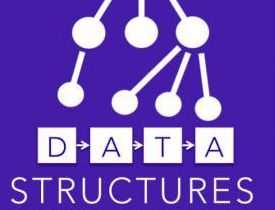Description
Course Name: Certificate in Data Structures
Course Id: CDS/Q1001.
Education Qualification: 12th Pass.
Duration: 90 Hrs (Equivalent to 3 months).
How You will Get Diploma Certificate:
Step 1- Select your Course for Certification.
Step 2- Click on Enroll Now.
Step 3- Proceed to Enroll Now.
Step 4- Fill Your Billing Details and Proceed to Pay.
Step 5- You Will be Redirected to Payment Gateway, Pay Course and Exam Fee by Following Options.
Card(Debit/Credit), Wallet, Paytm, Net banking, UPI and Google pay.
Step 6- After Payment You will get Study Material Login id and Password on your email id.
Step 7- After Completion of Course Study give Online Examination.
Step 8- After Online Examination you will get Diploma Certificate soft copy(Scan Copy) and Hard Copy(Original With Seal and Sign).
Step 9- After Certification you will receive Prospect Job Opportunities as per your Interest Area.
Online Examination Detail:
Duration- 60 minutes.
No. of Questions- 30. (Multiple Choice Questions).
Maximum Marks- 100, Passing Marks- 40%.
There is no negative marking in this module.
Benefits of Certification:
- Government Authorized Assessment Agency Certification.
- Certificate Valid for Lifetime.
- Lifetime Verification of Certificate.
- Free Job Assistance as per your Interest Area.
Syllabus
Introduction of Data Structure: Data structure introduction, types of data structure, advantages of data structures, properties of the array, advantages array, memory allocation of the array, accessing elements of an array, 2D array.
Sorting and Searching: Searching and sorting, linear search, a non- recursive program for linear search, a recursive program for linear search, binary search, algorithm, a non-recursive program for binary search, a recursive program for binary search, bubble sort, non-recursive program for selection sort, recursive program for selection sort.
Linear Data Structure: Array data structure, java arrays, creating java arrays, multi-dimensional arrays, java lists: classes VS interfaces, accessing list elements, stack data structure, stack operations, queue data structure.
Nonlinear Data Structure: Introduction Terminology, Tree Presentation, Binary Tress, Abstract data type, Properties of Binary Trees, Binary Representation, Binary traversal, Binary search trees, Graph terminology & Representation, Depth First search, Spanning trees, Prim’s Algorithm.
Hashing and File Structures: A simple hash function, implementation issues, other collision resolution techniques, patterns of record access, physical files and logical files, opening files, closing files, UNIX directory structure, file – related header files, UNIX file system commands.
Stacks and Queue: Stack representation, basic operations, algorithms for push operation, algorithm for pop operation, Queue representation, Enqueue operation, algorithm Enqueue operation, Dequeue operation, algorithm Dequeue operation, Queue program in C.

